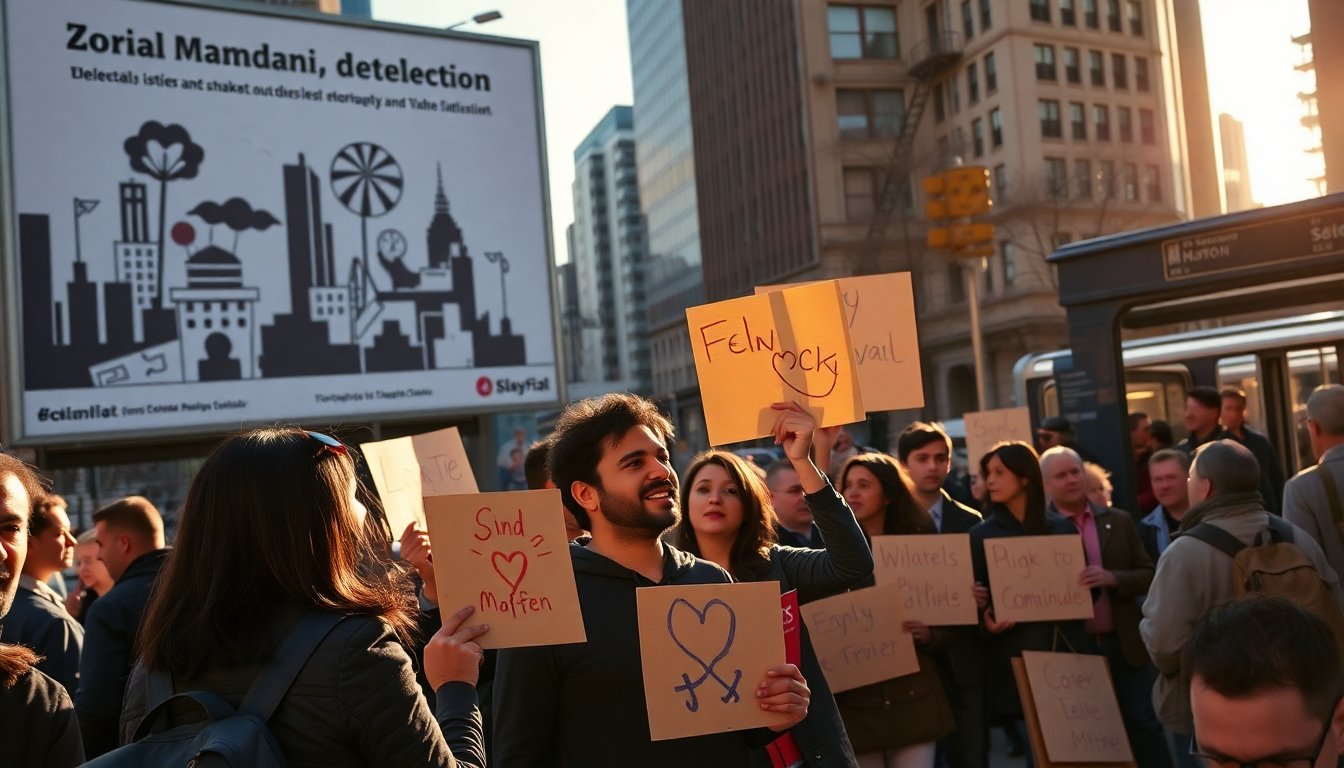Table of Contents
The political landscape in New York City is undergoing a significant transformation as Zohran Mamdani, a self-identified Democratic Socialist, emerges as a frontrunner in the mayoral race. Recent polling indicates that Mamdani is gaining traction not only against his primary competitors but is also shifting the discourse surrounding urban governance and leftist politics in one of America’s largest cities. His potential victory could have repercussions beyond city limits, impacting party strategies and voter engagement nationwide.
Current Polling Landscape and Its Implications
According to a recent survey conducted by a reputable news outlet in collaboration with Siena College, Mamdani has garnered substantial support among likely voters, with 46% indicating they would vote for him if the election were held today. This positions him ahead of former New York Governor Andrew Cuomo, who stands at 24%. The remaining candidates, including Republican Curtis Sliwa at 15% and incumbent Mayor Eric Adams at just 9%, further illustrate Mamdani’s commanding lead in the race.
The survey’s methodology reveals a sampling error of ±3.6 percentage points, underscoring the reliability of Mamdani’s lead. This data highlights not only his popularity but also suggests a shifting electorate that may be increasingly receptive to progressive policies. As the election date approaches in early November, the dynamics of the race are likely to evolve, necessitating that all candidates adjust their strategies accordingly.
Mamdani’s Policy Proposals and Support Base
Mamdani’s campaign is marked by bold proposals aimed at addressing the diverse concerns of New York City’s residents. He advocates for higher taxes on the wealthy, framing this initiative as a means to enhance the overall quality of life for city inhabitants. This stance resonates with many voters frustrated by income inequality, who seek tangible solutions to pressing urban challenges.
His candidacy has garnered support from influential left-wing figures such as Senator Bernie Sanders and Representative Alexandria Ocasio-Cortez, which amplifies his visibility and credibility among progressive voters. This backing not only legitimizes his campaign but also indicates a possible alignment with a broader movement aimed at reshaping the Democratic Party’s platform toward more progressive ideals. The key challenge will be whether Mamdani can translate this enthusiasm into actual votes on Election Day.
Future Outlook and Potential Consequences
The forthcoming election is poised to be a decisive moment for both the city and the Democratic Party. Should Mamdani secure a victory, it would signify a marked departure from traditional political norms in New York City, challenging the established order and potentially altering the party’s trajectory. His success could inspire similar movements in other urban centers, motivating candidates to adopt progressive policies and engage with constituents on issues of equity and justice.
However, the race is far from concluded. The Democratic establishment, represented by Cuomo and others, will likely intensify their efforts to reclaim lost ground as the election nears. Voter turnout, particularly among young and progressive demographics, will be vital in determining the election’s outcome. As the political landscape continues to evolve, all eyes will be on New York City, where the results may influence national political strategies and voter engagement for years to come.


